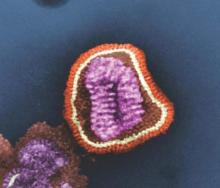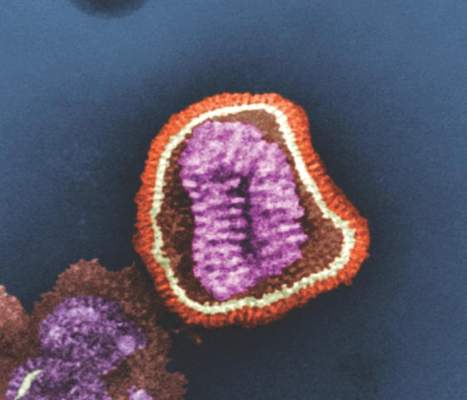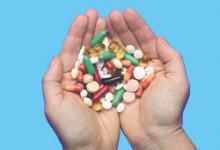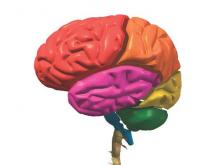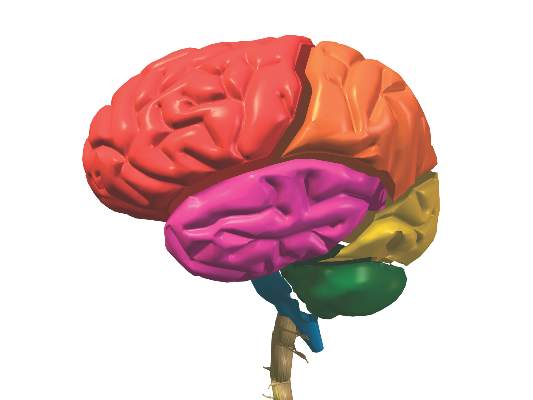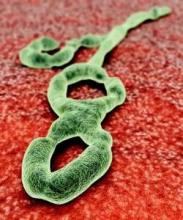User login
Study: 90% of patients with remitted MDD feel inadequate, hopeless
Feelings of inadequacy, hopelessness, and depressed mood were the most closely co-occurring and consistent symptoms in patients with remitted major depressive disorder, according to a study of 132 patients.
All participants had high psychosocial functioning, had fully remitted major depressive disorder (MDD) for more than 6 months, and had no relevant lifetime comorbid Axis I disorders. Of the 132 patients, 121 were medication free while they were participating in the research project. The researchers used a phenomenological psychopathology–based test translated from German to interview all 132 patients, with 94 having answered additional questions for the purpose of assessing “moral emotions.”
More than 90% of the study’s participants demonstrated that they had experienced feelings of inadequacy, hopelessness, and a depressed mood. “This core cluster closely co-occurred with another cluster of symptoms of high consistency around 90%: lack of drive (this item includes lack of energy), affective rigidity (i.e., an inability to respond emotionally, including anhedonia), blunted affect, and social withdrawal,” wrote Roland Zahn of King’s College London, and his colleagues.
Of the patients who answered questions aimed at assessing moral emotions, 45.8% said feelings of inadequacy were most bothersome, while 39.8% named self-blaming emotions, including guilt and self-disgust, as most bothersome. A slightly larger number of patients reported having felt self-disgust/contempt than the number of patients who reported having felt guilt.
“Future studies are needed to confirm these results in patients with current MDD and to investigate how distinctive self-blaming emotions are of MDD without comorbid and relevant Axis I disorders as studied here,” the researchers said.
Read the full study in Journal of Affective Disorders (doi: 10.1016/j.jad.2015.08.001).
Feelings of inadequacy, hopelessness, and depressed mood were the most closely co-occurring and consistent symptoms in patients with remitted major depressive disorder, according to a study of 132 patients.
All participants had high psychosocial functioning, had fully remitted major depressive disorder (MDD) for more than 6 months, and had no relevant lifetime comorbid Axis I disorders. Of the 132 patients, 121 were medication free while they were participating in the research project. The researchers used a phenomenological psychopathology–based test translated from German to interview all 132 patients, with 94 having answered additional questions for the purpose of assessing “moral emotions.”
More than 90% of the study’s participants demonstrated that they had experienced feelings of inadequacy, hopelessness, and a depressed mood. “This core cluster closely co-occurred with another cluster of symptoms of high consistency around 90%: lack of drive (this item includes lack of energy), affective rigidity (i.e., an inability to respond emotionally, including anhedonia), blunted affect, and social withdrawal,” wrote Roland Zahn of King’s College London, and his colleagues.
Of the patients who answered questions aimed at assessing moral emotions, 45.8% said feelings of inadequacy were most bothersome, while 39.8% named self-blaming emotions, including guilt and self-disgust, as most bothersome. A slightly larger number of patients reported having felt self-disgust/contempt than the number of patients who reported having felt guilt.
“Future studies are needed to confirm these results in patients with current MDD and to investigate how distinctive self-blaming emotions are of MDD without comorbid and relevant Axis I disorders as studied here,” the researchers said.
Read the full study in Journal of Affective Disorders (doi: 10.1016/j.jad.2015.08.001).
Feelings of inadequacy, hopelessness, and depressed mood were the most closely co-occurring and consistent symptoms in patients with remitted major depressive disorder, according to a study of 132 patients.
All participants had high psychosocial functioning, had fully remitted major depressive disorder (MDD) for more than 6 months, and had no relevant lifetime comorbid Axis I disorders. Of the 132 patients, 121 were medication free while they were participating in the research project. The researchers used a phenomenological psychopathology–based test translated from German to interview all 132 patients, with 94 having answered additional questions for the purpose of assessing “moral emotions.”
More than 90% of the study’s participants demonstrated that they had experienced feelings of inadequacy, hopelessness, and a depressed mood. “This core cluster closely co-occurred with another cluster of symptoms of high consistency around 90%: lack of drive (this item includes lack of energy), affective rigidity (i.e., an inability to respond emotionally, including anhedonia), blunted affect, and social withdrawal,” wrote Roland Zahn of King’s College London, and his colleagues.
Of the patients who answered questions aimed at assessing moral emotions, 45.8% said feelings of inadequacy were most bothersome, while 39.8% named self-blaming emotions, including guilt and self-disgust, as most bothersome. A slightly larger number of patients reported having felt self-disgust/contempt than the number of patients who reported having felt guilt.
“Future studies are needed to confirm these results in patients with current MDD and to investigate how distinctive self-blaming emotions are of MDD without comorbid and relevant Axis I disorders as studied here,” the researchers said.
Read the full study in Journal of Affective Disorders (doi: 10.1016/j.jad.2015.08.001).
FROM JOURNAL OF AFFECTIVE DISORDERS
Study: 90% of patients with remitted MDD feel inadequate, hopeless
Feelings of inadequacy, hopelessness, and depressed mood were the most closely co-occurring and consistent symptoms in patients with remitted major depressive disorder, according to a study of 132 patients.
All participants had high psychosocial functioning, had fully remitted major depressive disorder (MDD) for more than 6 months, and had no relevant lifetime comorbid Axis I disorders. Of the 132 patients, 121 were medication free while they were participating in the research project. The researchers used a phenomenological psychopathology–based test translated from German to interview all 132 patients, with 94 having answered additional questions for the purpose of assessing “moral emotions.”
More than 90% of the study’s participants demonstrated that they had experienced feelings of inadequacy, hopelessness, and a depressed mood. “This core cluster closely co-occurred with another cluster of symptoms of high consistency around 90%: lack of drive (this item includes lack of energy), affective rigidity (i.e., an inability to respond emotionally, including anhedonia), blunted affect, and social withdrawal,” wrote Roland Zahn of King’s College London, and his colleagues.
Of the patients who answered questions aimed at assessing moral emotions, 45.8% said feelings of inadequacy were most bothersome, while 39.8% named self-blaming emotions, including guilt and self-disgust, as most bothersome. A slightly larger number of patients reported having felt self-disgust/contempt than the number of patients who reported having felt guilt.
“Future studies are needed to confirm these results in patients with current MDD and to investigate how distinctive self-blaming emotions are of MDD without comorbid and relevant Axis I disorders as studied here,” the researchers said.
Read the full study in Journal of Affective Disorders (doi: 10.1016/j.jad.2015.08.001).
Feelings of inadequacy, hopelessness, and depressed mood were the most closely co-occurring and consistent symptoms in patients with remitted major depressive disorder, according to a study of 132 patients.
All participants had high psychosocial functioning, had fully remitted major depressive disorder (MDD) for more than 6 months, and had no relevant lifetime comorbid Axis I disorders. Of the 132 patients, 121 were medication free while they were participating in the research project. The researchers used a phenomenological psychopathology–based test translated from German to interview all 132 patients, with 94 having answered additional questions for the purpose of assessing “moral emotions.”
More than 90% of the study’s participants demonstrated that they had experienced feelings of inadequacy, hopelessness, and a depressed mood. “This core cluster closely co-occurred with another cluster of symptoms of high consistency around 90%: lack of drive (this item includes lack of energy), affective rigidity (i.e., an inability to respond emotionally, including anhedonia), blunted affect, and social withdrawal,” wrote Roland Zahn of King’s College London, and his colleagues.
Of the patients who answered questions aimed at assessing moral emotions, 45.8% said feelings of inadequacy were most bothersome, while 39.8% named self-blaming emotions, including guilt and self-disgust, as most bothersome. A slightly larger number of patients reported having felt self-disgust/contempt than the number of patients who reported having felt guilt.
“Future studies are needed to confirm these results in patients with current MDD and to investigate how distinctive self-blaming emotions are of MDD without comorbid and relevant Axis I disorders as studied here,” the researchers said.
Read the full study in Journal of Affective Disorders (doi: 10.1016/j.jad.2015.08.001).
Feelings of inadequacy, hopelessness, and depressed mood were the most closely co-occurring and consistent symptoms in patients with remitted major depressive disorder, according to a study of 132 patients.
All participants had high psychosocial functioning, had fully remitted major depressive disorder (MDD) for more than 6 months, and had no relevant lifetime comorbid Axis I disorders. Of the 132 patients, 121 were medication free while they were participating in the research project. The researchers used a phenomenological psychopathology–based test translated from German to interview all 132 patients, with 94 having answered additional questions for the purpose of assessing “moral emotions.”
More than 90% of the study’s participants demonstrated that they had experienced feelings of inadequacy, hopelessness, and a depressed mood. “This core cluster closely co-occurred with another cluster of symptoms of high consistency around 90%: lack of drive (this item includes lack of energy), affective rigidity (i.e., an inability to respond emotionally, including anhedonia), blunted affect, and social withdrawal,” wrote Roland Zahn of King’s College London, and his colleagues.
Of the patients who answered questions aimed at assessing moral emotions, 45.8% said feelings of inadequacy were most bothersome, while 39.8% named self-blaming emotions, including guilt and self-disgust, as most bothersome. A slightly larger number of patients reported having felt self-disgust/contempt than the number of patients who reported having felt guilt.
“Future studies are needed to confirm these results in patients with current MDD and to investigate how distinctive self-blaming emotions are of MDD without comorbid and relevant Axis I disorders as studied here,” the researchers said.
Read the full study in Journal of Affective Disorders (doi: 10.1016/j.jad.2015.08.001).
FROM JOURNAL OF AFFECTIVE DISORDERS
In utero exposure to tenofovir associated with lower BMC
The average bone mineral content (BMC) of infants of mothers who took tenofovir during pregnancy was 12.2% lower than was the average BMC of infants who were not exposed to the drug in utero, according to a controlled study.
The study’s participants were infants of mothers with HIV infections. The mothers enrolled in the study from April 2011 to June 2013, at 14 U.S. clinical sites. Late in pregnancy, 74 of the infants’ mothers had taken tenofovir disoproxil fumarate (TDF), which when combined with other antiretroviral drugs, is the preferred initial therapy for adults with (HIV) infection. The study’s additional participants were 69 infants of mothers who had not taken tenofovir during gestation. Infants from both groups had their BMC measured within a month of their births. All of the infants were born no earlier than after a 36-week pregnancy, did not have HIV infection, and were singletons.
The average whole-body BMC (with head) of infants exposed to TDF in utero was 56.0 g, compared with 63.8 g for unexposed infants (P = .002). For whole-body less head BMC, the mean was 33.3 g in the TDF-exposed group, compared with 36.3 g in the unexposed group (P = .038), showing that for TDF-exposed infants, the average whole-body less head BMC was 8.3% smaller than was that of the unexposed infants.
According to the researchers’ adjusted linear regression model, for TDF-exposed infants, the mean whole-body BMC (with head) was 5.3 g lower (P = .013) in the TDF-exposed infants. For the mean whole-body less head BMC, the adjusted model showed that this measurement was 1.9 g lower in the TDF-exposed infants (P = .15).
“The present study provides strong evidence of a biologic effect of maternal TDF on infant bone. However, the lack of infant BMC reference standards makes it difficult to determine if the lower BMC in tenofovir-exposed infants is abnormal,” according to Dr. George K. Siberry and his colleagues.
Read the full study in Clinical Infectious Diseases (doi: 10.1093/cid/civ437).
The average bone mineral content (BMC) of infants of mothers who took tenofovir during pregnancy was 12.2% lower than was the average BMC of infants who were not exposed to the drug in utero, according to a controlled study.
The study’s participants were infants of mothers with HIV infections. The mothers enrolled in the study from April 2011 to June 2013, at 14 U.S. clinical sites. Late in pregnancy, 74 of the infants’ mothers had taken tenofovir disoproxil fumarate (TDF), which when combined with other antiretroviral drugs, is the preferred initial therapy for adults with (HIV) infection. The study’s additional participants were 69 infants of mothers who had not taken tenofovir during gestation. Infants from both groups had their BMC measured within a month of their births. All of the infants were born no earlier than after a 36-week pregnancy, did not have HIV infection, and were singletons.
The average whole-body BMC (with head) of infants exposed to TDF in utero was 56.0 g, compared with 63.8 g for unexposed infants (P = .002). For whole-body less head BMC, the mean was 33.3 g in the TDF-exposed group, compared with 36.3 g in the unexposed group (P = .038), showing that for TDF-exposed infants, the average whole-body less head BMC was 8.3% smaller than was that of the unexposed infants.
According to the researchers’ adjusted linear regression model, for TDF-exposed infants, the mean whole-body BMC (with head) was 5.3 g lower (P = .013) in the TDF-exposed infants. For the mean whole-body less head BMC, the adjusted model showed that this measurement was 1.9 g lower in the TDF-exposed infants (P = .15).
“The present study provides strong evidence of a biologic effect of maternal TDF on infant bone. However, the lack of infant BMC reference standards makes it difficult to determine if the lower BMC in tenofovir-exposed infants is abnormal,” according to Dr. George K. Siberry and his colleagues.
Read the full study in Clinical Infectious Diseases (doi: 10.1093/cid/civ437).
The average bone mineral content (BMC) of infants of mothers who took tenofovir during pregnancy was 12.2% lower than was the average BMC of infants who were not exposed to the drug in utero, according to a controlled study.
The study’s participants were infants of mothers with HIV infections. The mothers enrolled in the study from April 2011 to June 2013, at 14 U.S. clinical sites. Late in pregnancy, 74 of the infants’ mothers had taken tenofovir disoproxil fumarate (TDF), which when combined with other antiretroviral drugs, is the preferred initial therapy for adults with (HIV) infection. The study’s additional participants were 69 infants of mothers who had not taken tenofovir during gestation. Infants from both groups had their BMC measured within a month of their births. All of the infants were born no earlier than after a 36-week pregnancy, did not have HIV infection, and were singletons.
The average whole-body BMC (with head) of infants exposed to TDF in utero was 56.0 g, compared with 63.8 g for unexposed infants (P = .002). For whole-body less head BMC, the mean was 33.3 g in the TDF-exposed group, compared with 36.3 g in the unexposed group (P = .038), showing that for TDF-exposed infants, the average whole-body less head BMC was 8.3% smaller than was that of the unexposed infants.
According to the researchers’ adjusted linear regression model, for TDF-exposed infants, the mean whole-body BMC (with head) was 5.3 g lower (P = .013) in the TDF-exposed infants. For the mean whole-body less head BMC, the adjusted model showed that this measurement was 1.9 g lower in the TDF-exposed infants (P = .15).
“The present study provides strong evidence of a biologic effect of maternal TDF on infant bone. However, the lack of infant BMC reference standards makes it difficult to determine if the lower BMC in tenofovir-exposed infants is abnormal,” according to Dr. George K. Siberry and his colleagues.
Read the full study in Clinical Infectious Diseases (doi: 10.1093/cid/civ437).
FROM CLINICAL INFECTIOUS DISEASES
HHS funds experimental flu drug for hospital patients
The U.S. Department of Health & Human Services’ Office of the Assistant Secretary for Preparedness and Response (ASPR) will provide “technical assistance and funding” to Janssen Pharmaceuticals for the development of an influenza antiviral drug that could be more potent and have a longer treatment window than do existing influenza drugs, according a statement from HHS.
The experimental drug, which Janssen intends to use to treat hospitalized patients with influenza, is called JNJ-872, also known as VX787, and may be the first in an entirely new class of influenza antivirals.
ASPR’s Biomedical Advanced Research and Development Authority (BARDA) specifically will provide up to $103.5 million over the next 4 years and 3 months to Janssen, and the contract leaves open the possibility of BARDA providing additional funding, capped at $131 million, for this project. BARDA’s contribution is part of its program for “advanced research and development, innovation, acquisition, and manufacturing of vaccines, drugs, diagnostic tools, and nonpharmaceutical products for public health emergency threats.”
Janssen will use the funds to conduct late stage clinical development of JNJ-872, which includes phase III studies in high-risk populations and hospitalized patients, and the final development of a validated commercial-scale manufacturing process. The pharmaceutical company will also explore the feasibility of an innovative approach to manufacturing, which allows for the continuous flow of materials throughout the manufacturing process, unlike the traditional manufacturing process, which is riddled with interruptions.
“BARDA’s goal for supporting JNJ-872 is development of a product that can be used not only to treat hospitalized influenza patients but also to treat patients for whom influenza poses high risks, such as the elderly, pediatrics, and those with chronic conditions such as COPD and heart disease ...,” the statement indicated.
The U.S. Department of Health & Human Services’ Office of the Assistant Secretary for Preparedness and Response (ASPR) will provide “technical assistance and funding” to Janssen Pharmaceuticals for the development of an influenza antiviral drug that could be more potent and have a longer treatment window than do existing influenza drugs, according a statement from HHS.
The experimental drug, which Janssen intends to use to treat hospitalized patients with influenza, is called JNJ-872, also known as VX787, and may be the first in an entirely new class of influenza antivirals.
ASPR’s Biomedical Advanced Research and Development Authority (BARDA) specifically will provide up to $103.5 million over the next 4 years and 3 months to Janssen, and the contract leaves open the possibility of BARDA providing additional funding, capped at $131 million, for this project. BARDA’s contribution is part of its program for “advanced research and development, innovation, acquisition, and manufacturing of vaccines, drugs, diagnostic tools, and nonpharmaceutical products for public health emergency threats.”
Janssen will use the funds to conduct late stage clinical development of JNJ-872, which includes phase III studies in high-risk populations and hospitalized patients, and the final development of a validated commercial-scale manufacturing process. The pharmaceutical company will also explore the feasibility of an innovative approach to manufacturing, which allows for the continuous flow of materials throughout the manufacturing process, unlike the traditional manufacturing process, which is riddled with interruptions.
“BARDA’s goal for supporting JNJ-872 is development of a product that can be used not only to treat hospitalized influenza patients but also to treat patients for whom influenza poses high risks, such as the elderly, pediatrics, and those with chronic conditions such as COPD and heart disease ...,” the statement indicated.
The U.S. Department of Health & Human Services’ Office of the Assistant Secretary for Preparedness and Response (ASPR) will provide “technical assistance and funding” to Janssen Pharmaceuticals for the development of an influenza antiviral drug that could be more potent and have a longer treatment window than do existing influenza drugs, according a statement from HHS.
The experimental drug, which Janssen intends to use to treat hospitalized patients with influenza, is called JNJ-872, also known as VX787, and may be the first in an entirely new class of influenza antivirals.
ASPR’s Biomedical Advanced Research and Development Authority (BARDA) specifically will provide up to $103.5 million over the next 4 years and 3 months to Janssen, and the contract leaves open the possibility of BARDA providing additional funding, capped at $131 million, for this project. BARDA’s contribution is part of its program for “advanced research and development, innovation, acquisition, and manufacturing of vaccines, drugs, diagnostic tools, and nonpharmaceutical products for public health emergency threats.”
Janssen will use the funds to conduct late stage clinical development of JNJ-872, which includes phase III studies in high-risk populations and hospitalized patients, and the final development of a validated commercial-scale manufacturing process. The pharmaceutical company will also explore the feasibility of an innovative approach to manufacturing, which allows for the continuous flow of materials throughout the manufacturing process, unlike the traditional manufacturing process, which is riddled with interruptions.
“BARDA’s goal for supporting JNJ-872 is development of a product that can be used not only to treat hospitalized influenza patients but also to treat patients for whom influenza poses high risks, such as the elderly, pediatrics, and those with chronic conditions such as COPD and heart disease ...,” the statement indicated.
Feds, drug company team up to combat bioterrorism
The Biomedical Advanced Research and Development Authority (BARDA) of the U.S. Department of Health & Human Services Office of the Assistant Secretary for Preparedness and Response, has banded with the biopharmaceutical company AstraZeneca to “accelerate new antibiotic development,” according to a statement by the HHS.
“Multiple drugs to combat bioterrorism threats and other life-threatening bacterial infections will be developed” under the partnership, the HHS reported.
This marks BARDA’s second partnership with a private company for the purpose of developing “a portfolio of drug candidates with dual uses in treating illnesses caused by bioterrorism agents and antibiotic-resistant infections,” the statement noted.
Under the agreement, BARDA initially will provide $50 million toward product development and could provide up to $170 million for the development of additional products over 5 years. BARDA and AstraZeneca will jointly determine which drug candidates continue to be developed based on technical and financial considerations.
BARDA’s supporting of the development of multiple drug candidates “increases the likelihood that one or more” of AstraZeneca’s drugs will advance to the level of being eligible for consideration by the Food and Drug Administration for approval.
Other potential advantages to the agreement are new antibiotics becoming available in the commercial marketplace, which would diminish the federal government’s need to stockpile these products for biodefense and reduce long-term costs for taxpayers, according to the statement.
The partnership’s inaugural project is an attempt at developing a drug to treat gram-negative infections. This drug candidate combines the two antibiotics aztreonam and avibactam.
In the United States, antibiotic-resistant bacteria are responsible for 2 million infections and 23,000 deaths annually, according to an estimate from the Centers for Disease Control and Prevention.
The Biomedical Advanced Research and Development Authority (BARDA) of the U.S. Department of Health & Human Services Office of the Assistant Secretary for Preparedness and Response, has banded with the biopharmaceutical company AstraZeneca to “accelerate new antibiotic development,” according to a statement by the HHS.
“Multiple drugs to combat bioterrorism threats and other life-threatening bacterial infections will be developed” under the partnership, the HHS reported.
This marks BARDA’s second partnership with a private company for the purpose of developing “a portfolio of drug candidates with dual uses in treating illnesses caused by bioterrorism agents and antibiotic-resistant infections,” the statement noted.
Under the agreement, BARDA initially will provide $50 million toward product development and could provide up to $170 million for the development of additional products over 5 years. BARDA and AstraZeneca will jointly determine which drug candidates continue to be developed based on technical and financial considerations.
BARDA’s supporting of the development of multiple drug candidates “increases the likelihood that one or more” of AstraZeneca’s drugs will advance to the level of being eligible for consideration by the Food and Drug Administration for approval.
Other potential advantages to the agreement are new antibiotics becoming available in the commercial marketplace, which would diminish the federal government’s need to stockpile these products for biodefense and reduce long-term costs for taxpayers, according to the statement.
The partnership’s inaugural project is an attempt at developing a drug to treat gram-negative infections. This drug candidate combines the two antibiotics aztreonam and avibactam.
In the United States, antibiotic-resistant bacteria are responsible for 2 million infections and 23,000 deaths annually, according to an estimate from the Centers for Disease Control and Prevention.
The Biomedical Advanced Research and Development Authority (BARDA) of the U.S. Department of Health & Human Services Office of the Assistant Secretary for Preparedness and Response, has banded with the biopharmaceutical company AstraZeneca to “accelerate new antibiotic development,” according to a statement by the HHS.
“Multiple drugs to combat bioterrorism threats and other life-threatening bacterial infections will be developed” under the partnership, the HHS reported.
This marks BARDA’s second partnership with a private company for the purpose of developing “a portfolio of drug candidates with dual uses in treating illnesses caused by bioterrorism agents and antibiotic-resistant infections,” the statement noted.
Under the agreement, BARDA initially will provide $50 million toward product development and could provide up to $170 million for the development of additional products over 5 years. BARDA and AstraZeneca will jointly determine which drug candidates continue to be developed based on technical and financial considerations.
BARDA’s supporting of the development of multiple drug candidates “increases the likelihood that one or more” of AstraZeneca’s drugs will advance to the level of being eligible for consideration by the Food and Drug Administration for approval.
Other potential advantages to the agreement are new antibiotics becoming available in the commercial marketplace, which would diminish the federal government’s need to stockpile these products for biodefense and reduce long-term costs for taxpayers, according to the statement.
The partnership’s inaugural project is an attempt at developing a drug to treat gram-negative infections. This drug candidate combines the two antibiotics aztreonam and avibactam.
In the United States, antibiotic-resistant bacteria are responsible for 2 million infections and 23,000 deaths annually, according to an estimate from the Centers for Disease Control and Prevention.
NIH funds research on adolescent substance use and the brain
The National Institutes of Health awarded 13 grants to research institutions in the United States to study the effects of adolescent substance use on the developing brain, according to a statement from the NIH issued Sept. 25.
The research project, known as the Adolescent Brain Cognitive Development (ABCD) Study, will follow approximately 10,000 children beginning at ages 9-10 years, prior to their initiating drug use, through the period of highest risk for substance use and other mental health disorders. Scientists will track the research subjects’ exposure to substances (including nicotine, alcohol, and marijuana), academic achievement, cognitive skills, mental health, and brain structure and function.
One of the grants will fund a coordinating center, another will fund a data analysis and informatics center, and the other 11 grants will fund research project sites.
Among the questions the study’s researchers will seek to answer are:
• What is the impact of occasional versus regular use of marijuana, alcohol, and tobacco, and other substances – alone or in combination – on the structure and function of the developing brain?
• How does the use of specific substances affect the risk of using other substances?
• Which brain pathways link adolescent substance use and the risk for mental illnesses?
• What impact does substance use have on physical health, psychological development, information processing, learning and memory, academic achievement, social development, and other behaviors?
• What factors (such as prenatal exposure, genetics, head trauma, and demographics) influence the development of substance use and its consequences?
The requests for applications and other information about the study are available here.
The National Institutes of Health awarded 13 grants to research institutions in the United States to study the effects of adolescent substance use on the developing brain, according to a statement from the NIH issued Sept. 25.
The research project, known as the Adolescent Brain Cognitive Development (ABCD) Study, will follow approximately 10,000 children beginning at ages 9-10 years, prior to their initiating drug use, through the period of highest risk for substance use and other mental health disorders. Scientists will track the research subjects’ exposure to substances (including nicotine, alcohol, and marijuana), academic achievement, cognitive skills, mental health, and brain structure and function.
One of the grants will fund a coordinating center, another will fund a data analysis and informatics center, and the other 11 grants will fund research project sites.
Among the questions the study’s researchers will seek to answer are:
• What is the impact of occasional versus regular use of marijuana, alcohol, and tobacco, and other substances – alone or in combination – on the structure and function of the developing brain?
• How does the use of specific substances affect the risk of using other substances?
• Which brain pathways link adolescent substance use and the risk for mental illnesses?
• What impact does substance use have on physical health, psychological development, information processing, learning and memory, academic achievement, social development, and other behaviors?
• What factors (such as prenatal exposure, genetics, head trauma, and demographics) influence the development of substance use and its consequences?
The requests for applications and other information about the study are available here.
The National Institutes of Health awarded 13 grants to research institutions in the United States to study the effects of adolescent substance use on the developing brain, according to a statement from the NIH issued Sept. 25.
The research project, known as the Adolescent Brain Cognitive Development (ABCD) Study, will follow approximately 10,000 children beginning at ages 9-10 years, prior to their initiating drug use, through the period of highest risk for substance use and other mental health disorders. Scientists will track the research subjects’ exposure to substances (including nicotine, alcohol, and marijuana), academic achievement, cognitive skills, mental health, and brain structure and function.
One of the grants will fund a coordinating center, another will fund a data analysis and informatics center, and the other 11 grants will fund research project sites.
Among the questions the study’s researchers will seek to answer are:
• What is the impact of occasional versus regular use of marijuana, alcohol, and tobacco, and other substances – alone or in combination – on the structure and function of the developing brain?
• How does the use of specific substances affect the risk of using other substances?
• Which brain pathways link adolescent substance use and the risk for mental illnesses?
• What impact does substance use have on physical health, psychological development, information processing, learning and memory, academic achievement, social development, and other behaviors?
• What factors (such as prenatal exposure, genetics, head trauma, and demographics) influence the development of substance use and its consequences?
The requests for applications and other information about the study are available here.
Bipolar type I patients’ relatives lack brain connectivity disruptions
Anatomical connectivity in discreet frontal regions of the brain is disrupted in bipolar I disorder patients, but not in mentally healthy relatives of such patients, according to a study.
The researchers looked for connectivity abnormalities in the brains of multiply affected bipolar I disorder families “to assess the utility of dysconnectivity as a biomarker and its endophenotypic potential.” Tractography was done on magnetic resonance diffusion images of the brains of 19 bipolar I patients in remission, 21 of the patients’ first-degree relatives who did not have bipolar I, and 18 unrelated controls who also did not have bipolar I. A connectivity matrix was generated for each patient, and the Brain Connectivity Toolbox was used to extract neural network metrics.
“Whole brain analysis revealed no differences between groups,” according to Natalie J. Forde, a PhD candidate at the University Medical Centre Gronigen (the Netherlands) and her colleagues. “Analysis of specific mainly frontal regions, previously implicated as potentially endophenotypic by functional magnetic resonance imaging analysis of the same cohort, revealed a significant effect of group in the right medial superior frontal gyrus and left middle frontal gyrus driven by reduced [organization] in [bipolar I] patients, compared with controls.”
Read the full study in Psychiatry Research: Neuroimaging (doi: 10.1016/j.pscychresns.2015.08.004).
Anatomical connectivity in discreet frontal regions of the brain is disrupted in bipolar I disorder patients, but not in mentally healthy relatives of such patients, according to a study.
The researchers looked for connectivity abnormalities in the brains of multiply affected bipolar I disorder families “to assess the utility of dysconnectivity as a biomarker and its endophenotypic potential.” Tractography was done on magnetic resonance diffusion images of the brains of 19 bipolar I patients in remission, 21 of the patients’ first-degree relatives who did not have bipolar I, and 18 unrelated controls who also did not have bipolar I. A connectivity matrix was generated for each patient, and the Brain Connectivity Toolbox was used to extract neural network metrics.
“Whole brain analysis revealed no differences between groups,” according to Natalie J. Forde, a PhD candidate at the University Medical Centre Gronigen (the Netherlands) and her colleagues. “Analysis of specific mainly frontal regions, previously implicated as potentially endophenotypic by functional magnetic resonance imaging analysis of the same cohort, revealed a significant effect of group in the right medial superior frontal gyrus and left middle frontal gyrus driven by reduced [organization] in [bipolar I] patients, compared with controls.”
Read the full study in Psychiatry Research: Neuroimaging (doi: 10.1016/j.pscychresns.2015.08.004).
Anatomical connectivity in discreet frontal regions of the brain is disrupted in bipolar I disorder patients, but not in mentally healthy relatives of such patients, according to a study.
The researchers looked for connectivity abnormalities in the brains of multiply affected bipolar I disorder families “to assess the utility of dysconnectivity as a biomarker and its endophenotypic potential.” Tractography was done on magnetic resonance diffusion images of the brains of 19 bipolar I patients in remission, 21 of the patients’ first-degree relatives who did not have bipolar I, and 18 unrelated controls who also did not have bipolar I. A connectivity matrix was generated for each patient, and the Brain Connectivity Toolbox was used to extract neural network metrics.
“Whole brain analysis revealed no differences between groups,” according to Natalie J. Forde, a PhD candidate at the University Medical Centre Gronigen (the Netherlands) and her colleagues. “Analysis of specific mainly frontal regions, previously implicated as potentially endophenotypic by functional magnetic resonance imaging analysis of the same cohort, revealed a significant effect of group in the right medial superior frontal gyrus and left middle frontal gyrus driven by reduced [organization] in [bipolar I] patients, compared with controls.”
Read the full study in Psychiatry Research: Neuroimaging (doi: 10.1016/j.pscychresns.2015.08.004).
FROM PSYCHIATRY RESEARCH: NEUROIMAGING
HHS funds development of experimental Ebola drug
The U.S. Department of Health & Human Services’ Office of Assistant Secretary for Preparedness and Response (ASPR) and Regeneron Pharmaceuticals have entered into an agreement for the purpose of advancing the development of a new experimental drug for treating the Ebola virus disease, according to a statement from the department.
The agreement represents the newest contribution of ASPR’s Biomedical Advance Research and Development Authority (BARDA) toward fighting the Ebola epidemic in West Africa. BARDA has promised to pay up to $38 million for the drug’s development and manufacturing, including the filing of an investigational new drug application with the Food and Drug Administration. All of the drug produced will be used in studies. “BARDA also could provide an additional $11.3 million to manufacture alternative monoclonal antibodies,” the statement indicates.
The experimental drug is based on three fully human monoclonal antibodies, which bind to a key Ebola viral protein and neutralize the virus. This decreases the amount of virus in the body that a patient’s immune system has to fight.
The drug company’s “technology facilitated the discovery and development of this monoclonal antibody therapeutic candidate in real time in just nine months as compared to the normal development cycle of several years, and the technology may have potential applications in future public health responses,” said BARDA Director Robin Robinson, Ph.D., in the statement.
The U.S. Department of Health & Human Services’ Office of Assistant Secretary for Preparedness and Response (ASPR) and Regeneron Pharmaceuticals have entered into an agreement for the purpose of advancing the development of a new experimental drug for treating the Ebola virus disease, according to a statement from the department.
The agreement represents the newest contribution of ASPR’s Biomedical Advance Research and Development Authority (BARDA) toward fighting the Ebola epidemic in West Africa. BARDA has promised to pay up to $38 million for the drug’s development and manufacturing, including the filing of an investigational new drug application with the Food and Drug Administration. All of the drug produced will be used in studies. “BARDA also could provide an additional $11.3 million to manufacture alternative monoclonal antibodies,” the statement indicates.
The experimental drug is based on three fully human monoclonal antibodies, which bind to a key Ebola viral protein and neutralize the virus. This decreases the amount of virus in the body that a patient’s immune system has to fight.
The drug company’s “technology facilitated the discovery and development of this monoclonal antibody therapeutic candidate in real time in just nine months as compared to the normal development cycle of several years, and the technology may have potential applications in future public health responses,” said BARDA Director Robin Robinson, Ph.D., in the statement.
The U.S. Department of Health & Human Services’ Office of Assistant Secretary for Preparedness and Response (ASPR) and Regeneron Pharmaceuticals have entered into an agreement for the purpose of advancing the development of a new experimental drug for treating the Ebola virus disease, according to a statement from the department.
The agreement represents the newest contribution of ASPR’s Biomedical Advance Research and Development Authority (BARDA) toward fighting the Ebola epidemic in West Africa. BARDA has promised to pay up to $38 million for the drug’s development and manufacturing, including the filing of an investigational new drug application with the Food and Drug Administration. All of the drug produced will be used in studies. “BARDA also could provide an additional $11.3 million to manufacture alternative monoclonal antibodies,” the statement indicates.
The experimental drug is based on three fully human monoclonal antibodies, which bind to a key Ebola viral protein and neutralize the virus. This decreases the amount of virus in the body that a patient’s immune system has to fight.
The drug company’s “technology facilitated the discovery and development of this monoclonal antibody therapeutic candidate in real time in just nine months as compared to the normal development cycle of several years, and the technology may have potential applications in future public health responses,” said BARDA Director Robin Robinson, Ph.D., in the statement.
PsA, PsC do not affect total hip replacement outcomes
Neither psoriatic arthritis (PsA) nor cutaneous psoriasis (PsC) is an independent predictor of poor postoperative pain or function following a total hip arthroplasty, according to the results of a case-control study by Dr. Lisa A. Mandl and her colleagues.
The study’s participants underwent surgery between May 1, 2007, and Dec. 31, 2010, in a center that performs more than 4,300 THAs annually. All subjects lived for at least 2 years after their operations. The researchers compared pre- and postoperative data from patients in the following three categories: those with PsA, those with PsC without evidence of inflammatory arthritis, and those with osteoarthritis (OA). Patients with OA comprised the control group, which excluded any patient who self-reported a history of PsA, rheumatoid arthritis, lupus erythematosus, or any other systematic rheumatic disease, or who had documentation of skin psoriasis. The researchers acquired postoperative self-report data from 47 PsA patients, 106 PsC patients, and 864 OA patients. Seventeen percent of patients submitted information on their status at 1 year, 69% at 2 years, and 14% at 3-5 years.
The primary outcomes of interest were postoperative pain and function, which were assessed via the Hip Osteoarthritis Outcome Score (HOOS), from which the Western Ontario and McMaster Universities Osteoarthritis Index (WOMAC) was derived.
There were no statistically significant differences in postoperative WOMAC pain or function scores between the three groups of patients (P = .78 and .96, respectively). The mean pain scores were 14.9, 6.1, and 15.8 for patients with PsA, PsC, and OA, respectively. These patients’ mean function scores were 16.3, 19.6, and 18.8 for the PsA, PsC and OA groups, respectively.
Overall levels of satisfaction with the surgery were similar among the three groups (P = .54). Ninety-three percent of the PsA patients, 79% of the PsC patients, and 84% of the OA patients were “very satisfied” with their total hip arthroplasty. Between 1% and 3% of each group reported being “very dissatisfied” with their surgery. The researchers found that extent of skin disease was not associated with worse postoperative pain or function.
“Further work needs to be done to better understand the interplay of disease activity and quality of life on the outcomes of [total hip arthroplasty] in PsA and PsC,” they wrote.
Read the report in Arthritis & Rheumatology (doi: 10.1002/art.39431).
Neither psoriatic arthritis (PsA) nor cutaneous psoriasis (PsC) is an independent predictor of poor postoperative pain or function following a total hip arthroplasty, according to the results of a case-control study by Dr. Lisa A. Mandl and her colleagues.
The study’s participants underwent surgery between May 1, 2007, and Dec. 31, 2010, in a center that performs more than 4,300 THAs annually. All subjects lived for at least 2 years after their operations. The researchers compared pre- and postoperative data from patients in the following three categories: those with PsA, those with PsC without evidence of inflammatory arthritis, and those with osteoarthritis (OA). Patients with OA comprised the control group, which excluded any patient who self-reported a history of PsA, rheumatoid arthritis, lupus erythematosus, or any other systematic rheumatic disease, or who had documentation of skin psoriasis. The researchers acquired postoperative self-report data from 47 PsA patients, 106 PsC patients, and 864 OA patients. Seventeen percent of patients submitted information on their status at 1 year, 69% at 2 years, and 14% at 3-5 years.
The primary outcomes of interest were postoperative pain and function, which were assessed via the Hip Osteoarthritis Outcome Score (HOOS), from which the Western Ontario and McMaster Universities Osteoarthritis Index (WOMAC) was derived.
There were no statistically significant differences in postoperative WOMAC pain or function scores between the three groups of patients (P = .78 and .96, respectively). The mean pain scores were 14.9, 6.1, and 15.8 for patients with PsA, PsC, and OA, respectively. These patients’ mean function scores were 16.3, 19.6, and 18.8 for the PsA, PsC and OA groups, respectively.
Overall levels of satisfaction with the surgery were similar among the three groups (P = .54). Ninety-three percent of the PsA patients, 79% of the PsC patients, and 84% of the OA patients were “very satisfied” with their total hip arthroplasty. Between 1% and 3% of each group reported being “very dissatisfied” with their surgery. The researchers found that extent of skin disease was not associated with worse postoperative pain or function.
“Further work needs to be done to better understand the interplay of disease activity and quality of life on the outcomes of [total hip arthroplasty] in PsA and PsC,” they wrote.
Read the report in Arthritis & Rheumatology (doi: 10.1002/art.39431).
Neither psoriatic arthritis (PsA) nor cutaneous psoriasis (PsC) is an independent predictor of poor postoperative pain or function following a total hip arthroplasty, according to the results of a case-control study by Dr. Lisa A. Mandl and her colleagues.
The study’s participants underwent surgery between May 1, 2007, and Dec. 31, 2010, in a center that performs more than 4,300 THAs annually. All subjects lived for at least 2 years after their operations. The researchers compared pre- and postoperative data from patients in the following three categories: those with PsA, those with PsC without evidence of inflammatory arthritis, and those with osteoarthritis (OA). Patients with OA comprised the control group, which excluded any patient who self-reported a history of PsA, rheumatoid arthritis, lupus erythematosus, or any other systematic rheumatic disease, or who had documentation of skin psoriasis. The researchers acquired postoperative self-report data from 47 PsA patients, 106 PsC patients, and 864 OA patients. Seventeen percent of patients submitted information on their status at 1 year, 69% at 2 years, and 14% at 3-5 years.
The primary outcomes of interest were postoperative pain and function, which were assessed via the Hip Osteoarthritis Outcome Score (HOOS), from which the Western Ontario and McMaster Universities Osteoarthritis Index (WOMAC) was derived.
There were no statistically significant differences in postoperative WOMAC pain or function scores between the three groups of patients (P = .78 and .96, respectively). The mean pain scores were 14.9, 6.1, and 15.8 for patients with PsA, PsC, and OA, respectively. These patients’ mean function scores were 16.3, 19.6, and 18.8 for the PsA, PsC and OA groups, respectively.
Overall levels of satisfaction with the surgery were similar among the three groups (P = .54). Ninety-three percent of the PsA patients, 79% of the PsC patients, and 84% of the OA patients were “very satisfied” with their total hip arthroplasty. Between 1% and 3% of each group reported being “very dissatisfied” with their surgery. The researchers found that extent of skin disease was not associated with worse postoperative pain or function.
“Further work needs to be done to better understand the interplay of disease activity and quality of life on the outcomes of [total hip arthroplasty] in PsA and PsC,” they wrote.
Read the report in Arthritis & Rheumatology (doi: 10.1002/art.39431).
FROM ARTHRITIS & RHEUMATOLOGY
USPSTF guideline: Tell smokers to stop, and provide cessation aids
The U.S. Preventive Services Task Force has issued a final grade A recommendation urging clinicians to ask all adults whether they smoke, advise them to quit if they do, and provide cessation aids to adults who use tobacco.
The guideline also includes Grade I statements, which say “the current evidence is insufficient to assess the balance of benefits and harms of pharmacotherapy interventions for tobacco cessation in pregnant women and electronic nicotine delivery systems for tobacco cessation in all adults (Ann Intern Med. 2015 Sep 22. doi: 10.7326/M15-2023).
The guideline reaffirms the 2009 USPSTF recommendation, which recommends clinicians ask all adults about tobacco use and provides tobacco cessation interventions to help them quit. The new guideline differs from the 2009 recommendation in that it calls for more evidence on the use of e-cigarettes for smoking cessation in adults and the use of medications to help pregnant women stop smoking.
“A large body of evidence on interventions for smoking cessation already exists, and the overall benefit of pharmacotherapy and behavioral counseling to promote smoking is well established,” says the new USPSTF guideline.
“Tobacco is the leading preventable cause of disease, disability, and death in the United States,” with cigarette smoking, specifically, causing more than 480,000 premature deaths annually and accounting for one in every five deaths, according to the guideline.
“In pregnant women, smoking increases the risk of congenital anomalies; perinatal complications, such as preterm birth, fetal growth restriction, and placental abruption; miscarriage and stillbirth; and neonatal or pediatric complications, such as sudden infant death syndrome and impaired lung function in childhood,” the guideline says.
According to a 2013 systematic review of 28 studies, rates of smoking abstinence at 6 months or more were 8% in groups that received physician advice, compared with 5% in groups that received no advice or usual care (risk ratio, 1.76; 95% confidence interval, 1.56-1.96).
Pharmacotherapy was effective at stopping nonpregnant smokers from continuing to smoke; a 2012 systematic review of 117 nicotine replacement therapy (NRT) studies found that 17% of participants who took any form of an NRT drug abstained from smoking for 6 months or more, compared with 10% of participants who received placebo or did not take an NRT drug (RR, 0.60; 95% CI, 1.53-1.68), the review says.
Combinations of behavioral counseling and pharmacotherapy for smoking cessation also were effective; “a 2012 good-quality systematic review” found the abstinence rate of participants who received combination pharmacotherapy and intensive behavioral counseling was 14.5%, at 6 months or more, compared with 8% among control participants who received “usual care, self-help materials, or brief advice on quitting (which was less intensive than the counseling or support given to the intervention groups)” (RR, 1.82; 95% CI, 1.66-2.00).
For pregnant women, “a good-quality systematic review of 86 studies done in 2013” found that behavioral interventions were effective at improving rates of smoking cessation. Compared with control participants, pregnant women who received any type of behavioral intervention before the third trimester had higher cessation rates late in pregnancy (15% vs. 11%; RR, 1.45; 95% CI, 1.27-1.64), the review says.
Responding to pubic comments, USPSTF said that “both intervention types (pharmacotherapy and behavioral intervention) are effective and recommended,” with combinations of interventions being the most effective at getting patients to stop smoking.
“Further research is still needed to elucidate specific features of complex behavioral counseling interventions, benefits of pharmacotherapy in specific populations [such as pregnant women and adults with mental health conditions], and the efficacy of newer technology-based interventions … such as Internet-based programs, mobile or smartphone applications, and text-messaging programs.” The document also called for investigations into the safety, benefits, and harms of electronic nicotine delivery systems.
The authors of the guidelines stated they had nothing to disclose.
The U.S. Preventive Services Task Force has issued a final grade A recommendation urging clinicians to ask all adults whether they smoke, advise them to quit if they do, and provide cessation aids to adults who use tobacco.
The guideline also includes Grade I statements, which say “the current evidence is insufficient to assess the balance of benefits and harms of pharmacotherapy interventions for tobacco cessation in pregnant women and electronic nicotine delivery systems for tobacco cessation in all adults (Ann Intern Med. 2015 Sep 22. doi: 10.7326/M15-2023).
The guideline reaffirms the 2009 USPSTF recommendation, which recommends clinicians ask all adults about tobacco use and provides tobacco cessation interventions to help them quit. The new guideline differs from the 2009 recommendation in that it calls for more evidence on the use of e-cigarettes for smoking cessation in adults and the use of medications to help pregnant women stop smoking.
“A large body of evidence on interventions for smoking cessation already exists, and the overall benefit of pharmacotherapy and behavioral counseling to promote smoking is well established,” says the new USPSTF guideline.
“Tobacco is the leading preventable cause of disease, disability, and death in the United States,” with cigarette smoking, specifically, causing more than 480,000 premature deaths annually and accounting for one in every five deaths, according to the guideline.
“In pregnant women, smoking increases the risk of congenital anomalies; perinatal complications, such as preterm birth, fetal growth restriction, and placental abruption; miscarriage and stillbirth; and neonatal or pediatric complications, such as sudden infant death syndrome and impaired lung function in childhood,” the guideline says.
According to a 2013 systematic review of 28 studies, rates of smoking abstinence at 6 months or more were 8% in groups that received physician advice, compared with 5% in groups that received no advice or usual care (risk ratio, 1.76; 95% confidence interval, 1.56-1.96).
Pharmacotherapy was effective at stopping nonpregnant smokers from continuing to smoke; a 2012 systematic review of 117 nicotine replacement therapy (NRT) studies found that 17% of participants who took any form of an NRT drug abstained from smoking for 6 months or more, compared with 10% of participants who received placebo or did not take an NRT drug (RR, 0.60; 95% CI, 1.53-1.68), the review says.
Combinations of behavioral counseling and pharmacotherapy for smoking cessation also were effective; “a 2012 good-quality systematic review” found the abstinence rate of participants who received combination pharmacotherapy and intensive behavioral counseling was 14.5%, at 6 months or more, compared with 8% among control participants who received “usual care, self-help materials, or brief advice on quitting (which was less intensive than the counseling or support given to the intervention groups)” (RR, 1.82; 95% CI, 1.66-2.00).
For pregnant women, “a good-quality systematic review of 86 studies done in 2013” found that behavioral interventions were effective at improving rates of smoking cessation. Compared with control participants, pregnant women who received any type of behavioral intervention before the third trimester had higher cessation rates late in pregnancy (15% vs. 11%; RR, 1.45; 95% CI, 1.27-1.64), the review says.
Responding to pubic comments, USPSTF said that “both intervention types (pharmacotherapy and behavioral intervention) are effective and recommended,” with combinations of interventions being the most effective at getting patients to stop smoking.
“Further research is still needed to elucidate specific features of complex behavioral counseling interventions, benefits of pharmacotherapy in specific populations [such as pregnant women and adults with mental health conditions], and the efficacy of newer technology-based interventions … such as Internet-based programs, mobile or smartphone applications, and text-messaging programs.” The document also called for investigations into the safety, benefits, and harms of electronic nicotine delivery systems.
The authors of the guidelines stated they had nothing to disclose.
The U.S. Preventive Services Task Force has issued a final grade A recommendation urging clinicians to ask all adults whether they smoke, advise them to quit if they do, and provide cessation aids to adults who use tobacco.
The guideline also includes Grade I statements, which say “the current evidence is insufficient to assess the balance of benefits and harms of pharmacotherapy interventions for tobacco cessation in pregnant women and electronic nicotine delivery systems for tobacco cessation in all adults (Ann Intern Med. 2015 Sep 22. doi: 10.7326/M15-2023).
The guideline reaffirms the 2009 USPSTF recommendation, which recommends clinicians ask all adults about tobacco use and provides tobacco cessation interventions to help them quit. The new guideline differs from the 2009 recommendation in that it calls for more evidence on the use of e-cigarettes for smoking cessation in adults and the use of medications to help pregnant women stop smoking.
“A large body of evidence on interventions for smoking cessation already exists, and the overall benefit of pharmacotherapy and behavioral counseling to promote smoking is well established,” says the new USPSTF guideline.
“Tobacco is the leading preventable cause of disease, disability, and death in the United States,” with cigarette smoking, specifically, causing more than 480,000 premature deaths annually and accounting for one in every five deaths, according to the guideline.
“In pregnant women, smoking increases the risk of congenital anomalies; perinatal complications, such as preterm birth, fetal growth restriction, and placental abruption; miscarriage and stillbirth; and neonatal or pediatric complications, such as sudden infant death syndrome and impaired lung function in childhood,” the guideline says.
According to a 2013 systematic review of 28 studies, rates of smoking abstinence at 6 months or more were 8% in groups that received physician advice, compared with 5% in groups that received no advice or usual care (risk ratio, 1.76; 95% confidence interval, 1.56-1.96).
Pharmacotherapy was effective at stopping nonpregnant smokers from continuing to smoke; a 2012 systematic review of 117 nicotine replacement therapy (NRT) studies found that 17% of participants who took any form of an NRT drug abstained from smoking for 6 months or more, compared with 10% of participants who received placebo or did not take an NRT drug (RR, 0.60; 95% CI, 1.53-1.68), the review says.
Combinations of behavioral counseling and pharmacotherapy for smoking cessation also were effective; “a 2012 good-quality systematic review” found the abstinence rate of participants who received combination pharmacotherapy and intensive behavioral counseling was 14.5%, at 6 months or more, compared with 8% among control participants who received “usual care, self-help materials, or brief advice on quitting (which was less intensive than the counseling or support given to the intervention groups)” (RR, 1.82; 95% CI, 1.66-2.00).
For pregnant women, “a good-quality systematic review of 86 studies done in 2013” found that behavioral interventions were effective at improving rates of smoking cessation. Compared with control participants, pregnant women who received any type of behavioral intervention before the third trimester had higher cessation rates late in pregnancy (15% vs. 11%; RR, 1.45; 95% CI, 1.27-1.64), the review says.
Responding to pubic comments, USPSTF said that “both intervention types (pharmacotherapy and behavioral intervention) are effective and recommended,” with combinations of interventions being the most effective at getting patients to stop smoking.
“Further research is still needed to elucidate specific features of complex behavioral counseling interventions, benefits of pharmacotherapy in specific populations [such as pregnant women and adults with mental health conditions], and the efficacy of newer technology-based interventions … such as Internet-based programs, mobile or smartphone applications, and text-messaging programs.” The document also called for investigations into the safety, benefits, and harms of electronic nicotine delivery systems.
The authors of the guidelines stated they had nothing to disclose.
FROM ANNALS of INTERNAL MEDICINE





